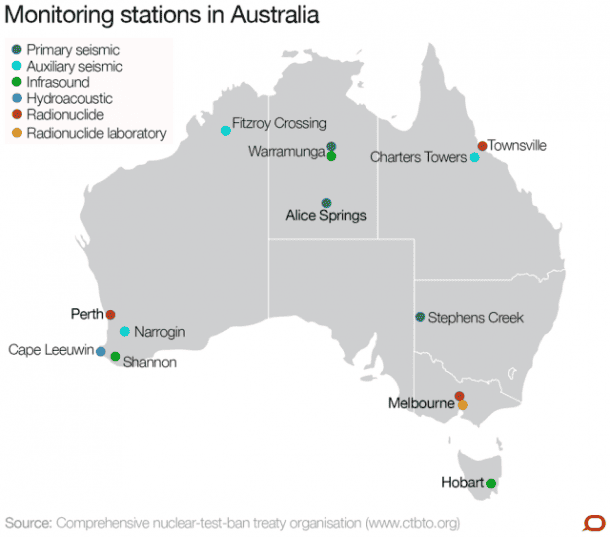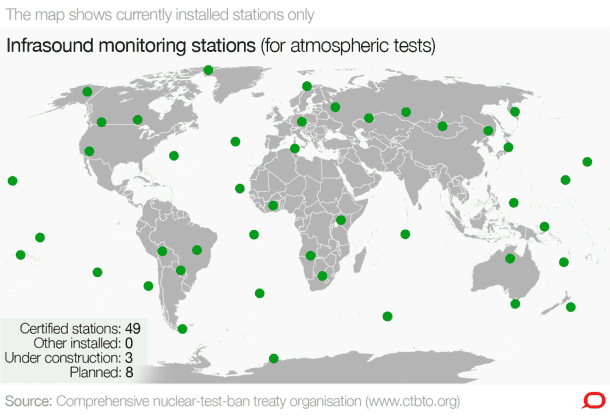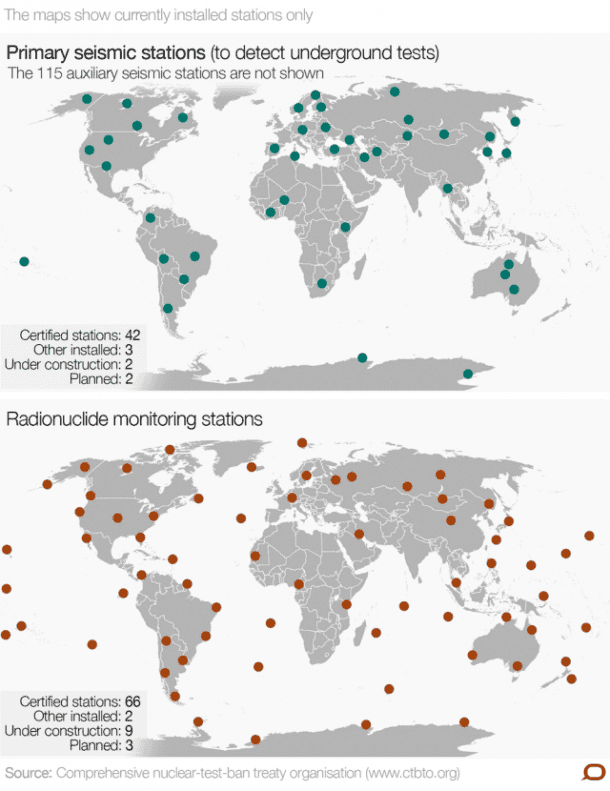On September 3, North Korea conducted a nuclear test that was detected by the Vienna-based Comprehensive Test Ban Treaty Organization (CTBTO). It was a blast yield of 160 kilotons that was recorded at a seismic magnitude of 6.1. This is more than 10 times of the Hiroshima blast that was only 15 kilotons. The blast location was found to be North Korea’s nuclear test site.
The only question is, whether or not it was a nuclear test, an explosion of some other kind, or even possibly an earthquake. The only way to confirm the happening of a nuclear explosion will be to find the traces of noble gas Xenon. While South Korean monitors have detected xenon-133, but CTBTO has not confirmed it yet.
In many of the previous North Korean tests, similar fallouts were observed. However, the conditions sometimes vary depending on whether the test cavity leaks or collapses. The 1996 Comprehensive Nuclear Test Ban treaty bans all nuclear tests in all environments forever, and the CTBTO International Monitoring System is designed to verify compliance with the treaty. The system is highly sensitive, and it can detect underground tests even below one kiloton.
The monitoring system is a combination of 321 smaller systems that are spread worldwide. They use four different technologies to identify such happenings.
- Seismic: For detecting underground tests
- Radionuclide detection: For identifying breakdown products
- Hydroacoustic: For detecting underwater tests
- Infrasound: For atmospheric tests

The construction of the international monitoring system began in 1996 and even after 20 years, it is only 90 percent complete. A global communications satellite network communicates the data from the International Monitoring System to Vienna to be compiled, analyzed, and shared with the member states. The radioactive fallout after an explosion is measured by sixteen different laboratories.
All the member states fund the nuclear monitoring system based on the United Nations national GDP formula. Many political and financial constraints have hindered the development of the system, and some errors were made in a rushed effort to meet the specifications. Many problems arose when systems were to be installed in remote and inaccessible areas.
The International Monitoring System is near completion after 20 years of construction while spending millions of dollars investment. The last of the hydroacoustic systems finished installation on France’s Crozet Islands in the southern Indian Ocean in June. The results achieved by the system are even better than the designers’ anticipation.
The system also helped to provide early warnings of tsunamis that is just a side benefit to its many features. It detected the 2004 Indian Ocean tsunami and even tracked the radioactive emissions of the 2011 Fukushima nuclear disaster.
The global monitoring system is sophisticated enough to catch the smallest of nuclear activity, and it just continues to get better. That leaves us with a few problems with the nuclear test ban treaty itself that remains open to signature and has not been enforced yet. The CTBTO remains provisional as it needs to be ratified by all the 44 states with significant nuclear capacity.
The treaty has been signed by 183 states and ratified by 162. The only problem is that eight of the 44 states that have a significant nuclear capacity have not ratified it yet. This includes China, Egypt, India, Iran, Israel, Pakistan, North Korea, and the United States. The only ones among those who signed the treaty are China, Egypt, Iran, Israel, and the US.
Even if all the seven countries ratify the treaty, will North Korea agree to do the same? We highly doubt so.
Images: Quartz



